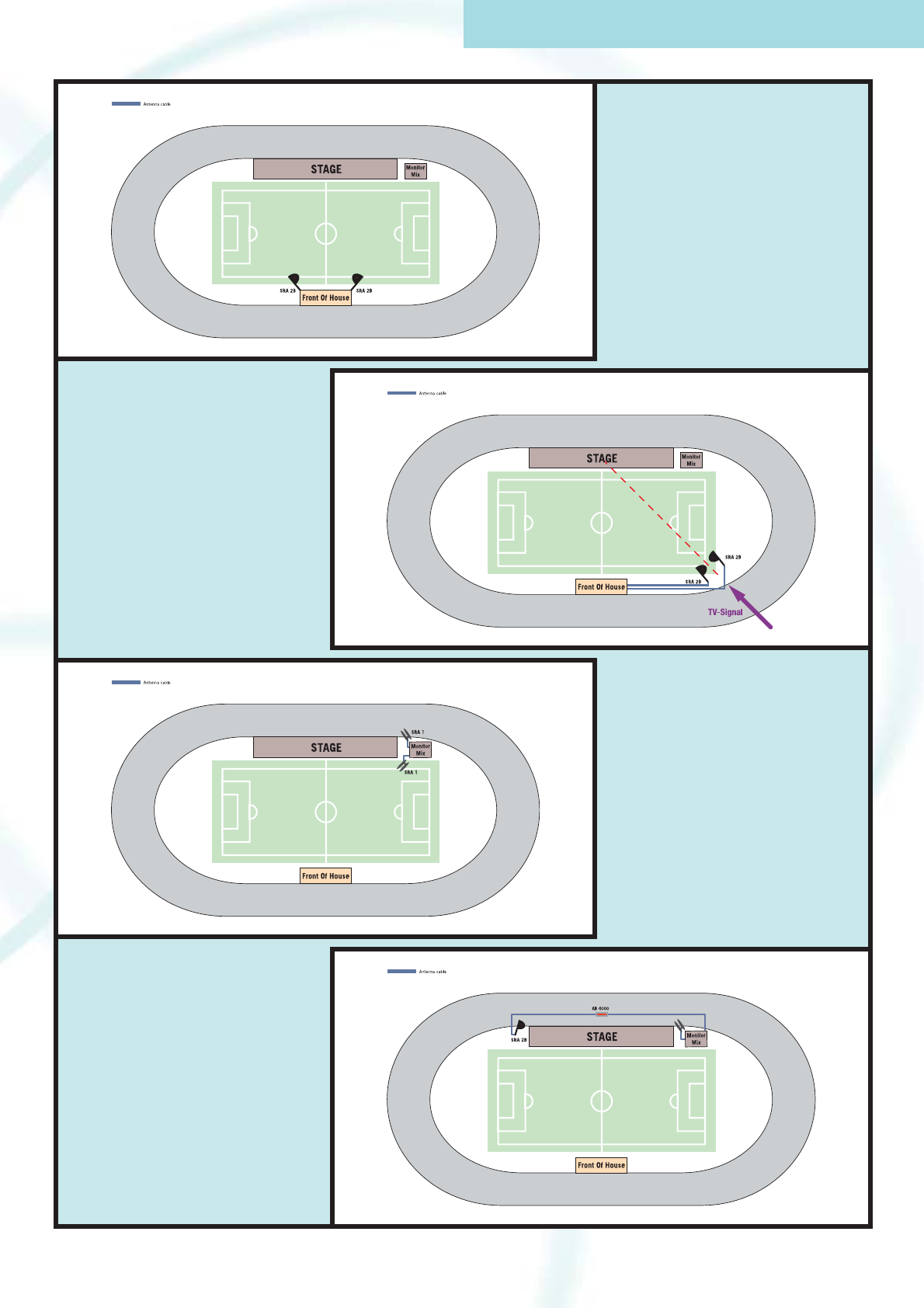
www.akg.com 49
Stadium (theater, opera house) example 1:
Active directional antennas set up next to the receivers at
the FOH mixing position.
Benefits:
• Consistent coverage of entire stage
(no far-near problem)
• Short antenna cable runs
Drawbacks:
• This setup will not work unless the FOH mixing position
is high enough above the audience.
• Risk of interference from local TV stations
The best antenna system for enclosed spaces.
Stadium example 3:
Two passive directional antennas set up next to the recei-
vers at the monitor mixing position.
Benefits:
• Wanted signal suppresses interference
• Simple wiring
Drawbacks:
• Unsuitable for large multichannel systems due to risk of
intermodulation and shadowing (far-near problem)
Stadium example 2:
Active directional antennas set up far from the stage, with
their reflectors oriented to blank out interference sources.
The antennas were positioned on a straight line from the
interference source (e.g., a local TV transmitter)to the
receiving antennas and stage center, several meters above
the audience.
Benefits:
• Consistent coverage of entire stage
• Dominant interference source is drowned out
Drawbacks:
• Risk of electrosmog interference
• Long cable runs (boosters may eliminate risk
of intermodulation)
Excellent solution for enclosed spaces.
Stadium (theater, opera house) example 4:
Single passive directional antenna set up next to the receiver
at the monitor mixing position, one active or passive omnidi-
rectional antenna mounted at the opposite end of the stage.
Vorteile:
• Wanted signal is strong enough to suppress electrosmog.
• Far-near problem is smaller than in example 3.
• Simple wiring
Nachteile:
• Unsuitable for large multichannel systems
• The CLA settings for the two antenna channels must be
carefully selected, otherwise the receivers may be fed the
output signal of the same antenna all the time, effec-
tively defeating the diversity function.
AKG WMS ANTENNA TECHNOLOGY


















